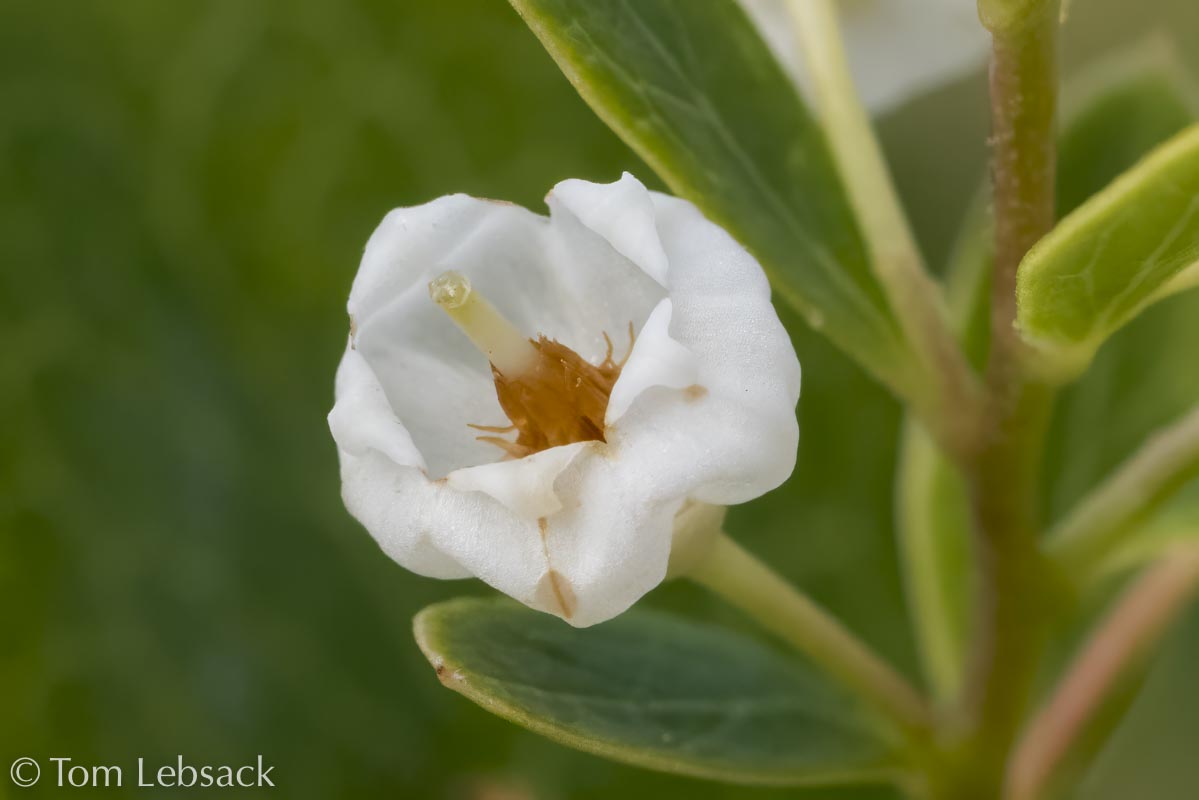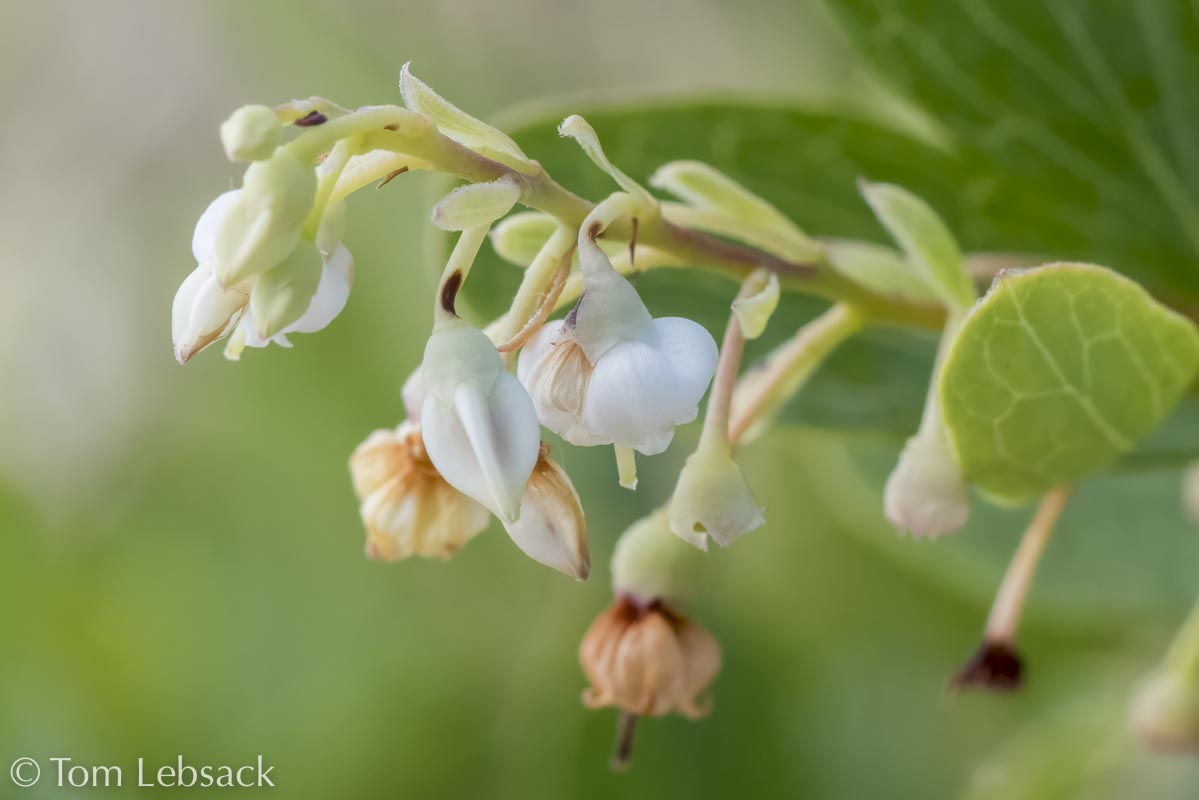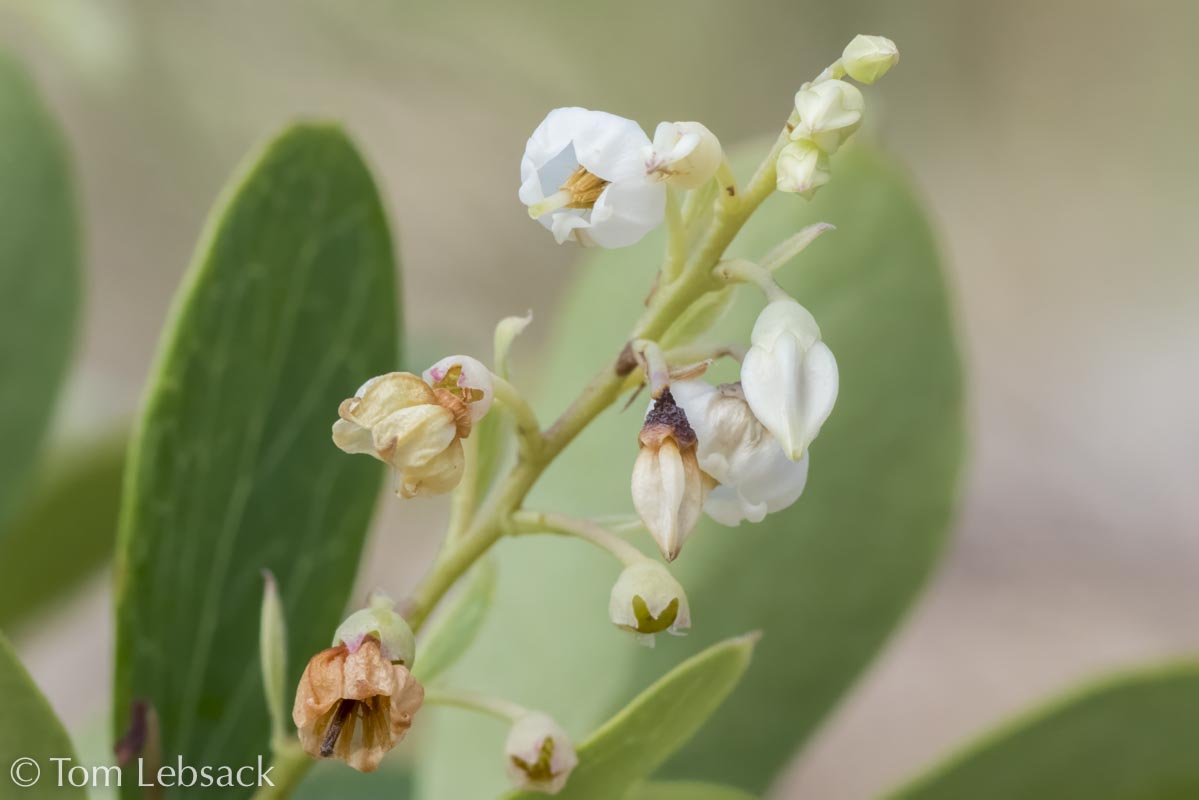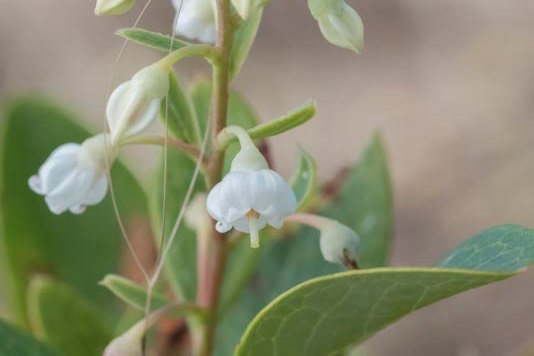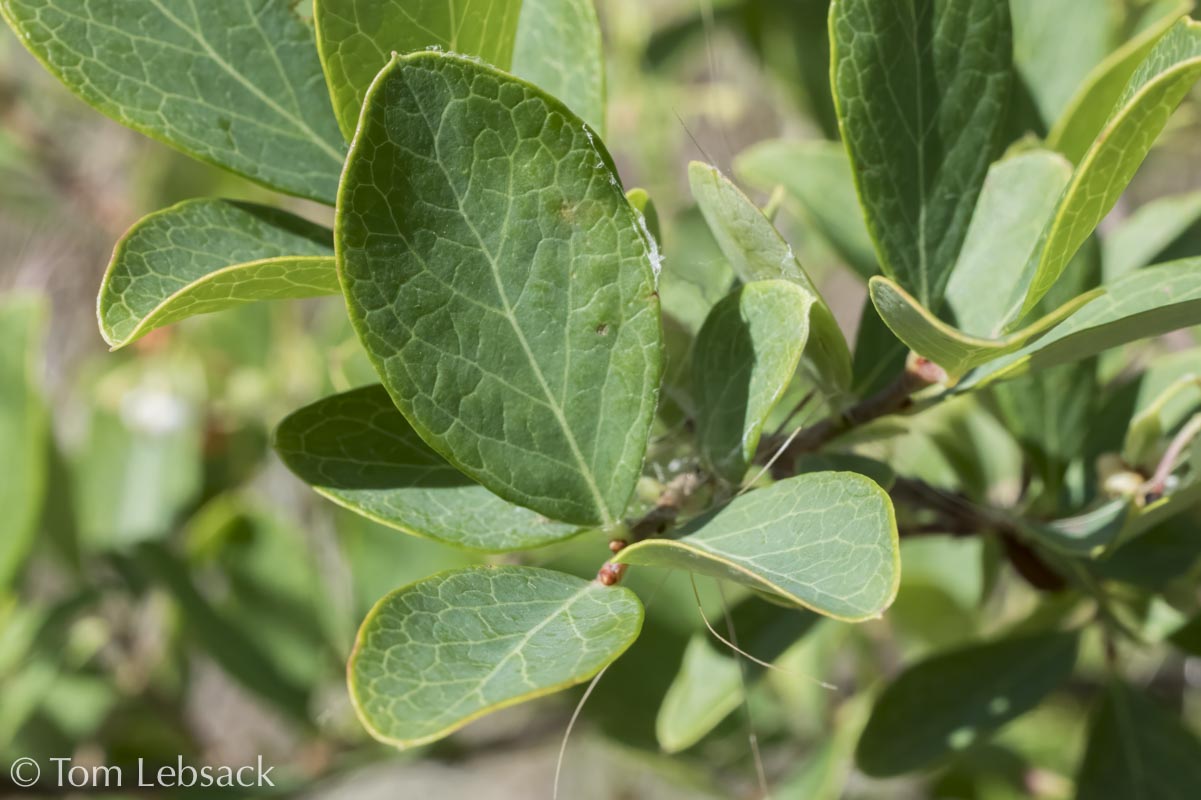Texas Wildbuds
Vaccinium arboreum
(Farkleberry)
| Scientific Name | Vaccinium arboreum | USDA PLANTS Symbol | VAAR |
| Common Name | Farkleberry, Sparkleberry | ITIS Taxonomic Serial No. | 23580 |
| Family | Ericaceae (Heath) | SEINet Reference |
Click Here |
| Description | Habitat: Sandy, well-drained soils in fields, clearings, open forests, dry hillsides and wet bottomlands in East Texas west to the Bastrop area. Plant: Shrub or small tree, up to 15 feet tall, the largest of the Vaccinium genus; an evergreen in the South, deciduous further north; twigs of current season reddish-green, smooth or somewhat hairy. Leaves: Oblanceolate to obovate, rounded tips and smooth edges; 3/4 to 2 inches long; short petioles; upper side leathery, glossy. Inflorescence: Small bell-shaped, drooping white to pinkish blossoms, in loose racemes or solitary; on short pedicels 1/4 to 3/8-inch long; 5 lobes about 1/4-inch long; style visible. Fruit: Black, dry, round berries, 1/4-inch diameter, considered inedible by humans. Bloom Period: Spring. References: SEINet and Texas A&M. |
BONAP Distribution Map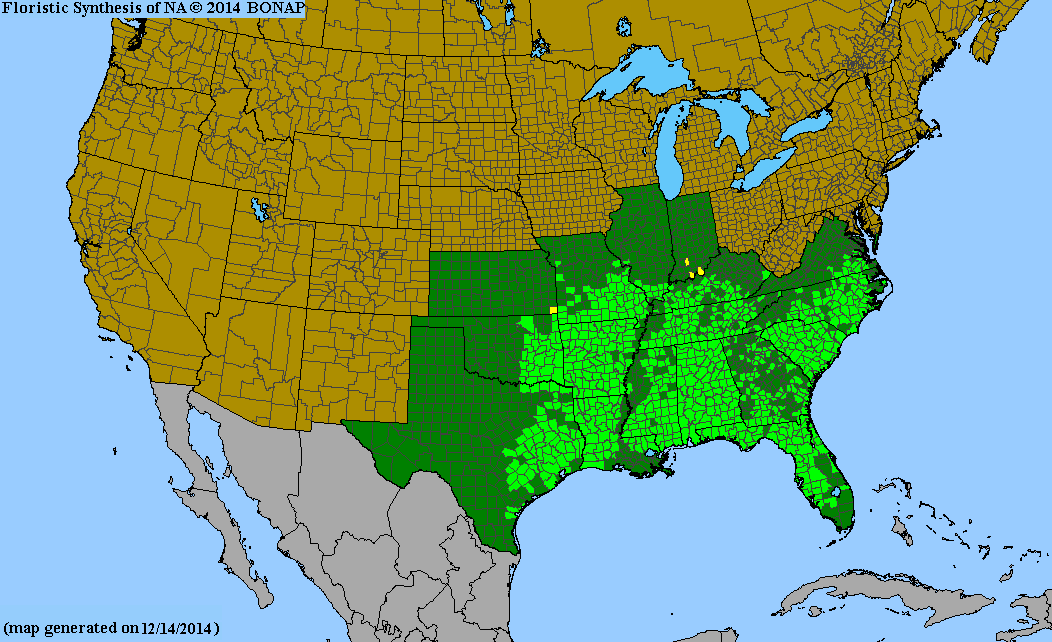 Map Color Key |
Texas Status: Native |
Banner photo of Castilleja indivisa and Lupinus ssp. taken along FM 1323 north of Johnson City, Blanco County
© Tom Lebsack 2025
Every attempt is made to provide accurate, up-to-date, and relevant information, but the completeness or accuracy of any information presented on this website cannot be guaranteed. I use authoritative references to insure high standards of accuracy and review and update the information frequently.
